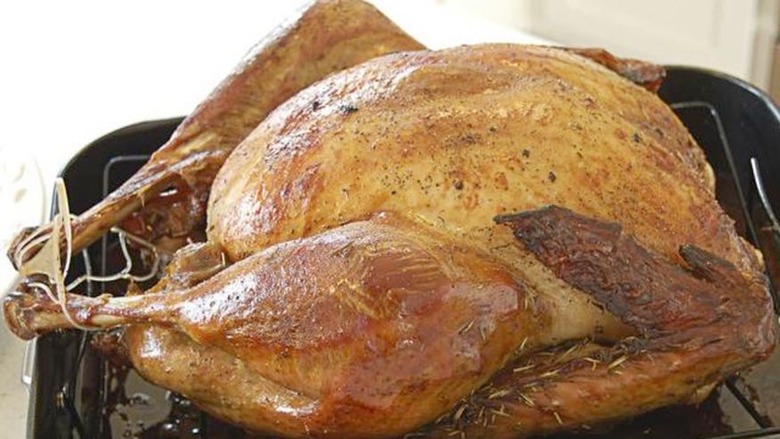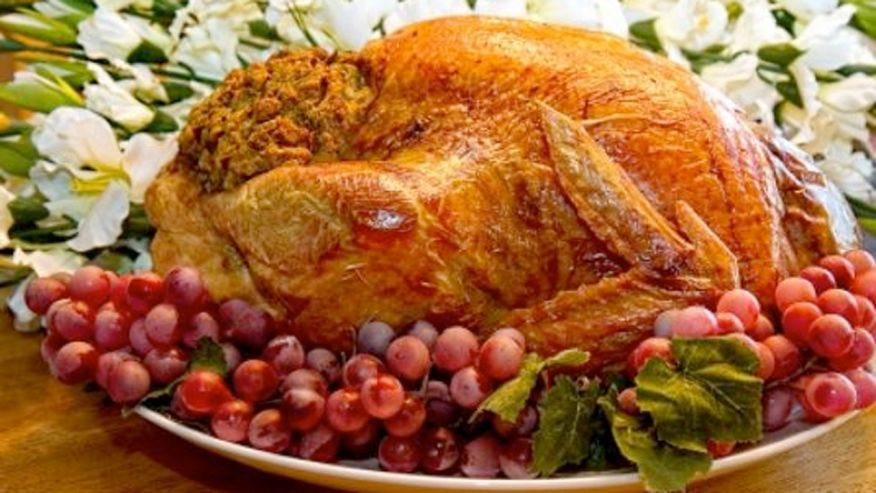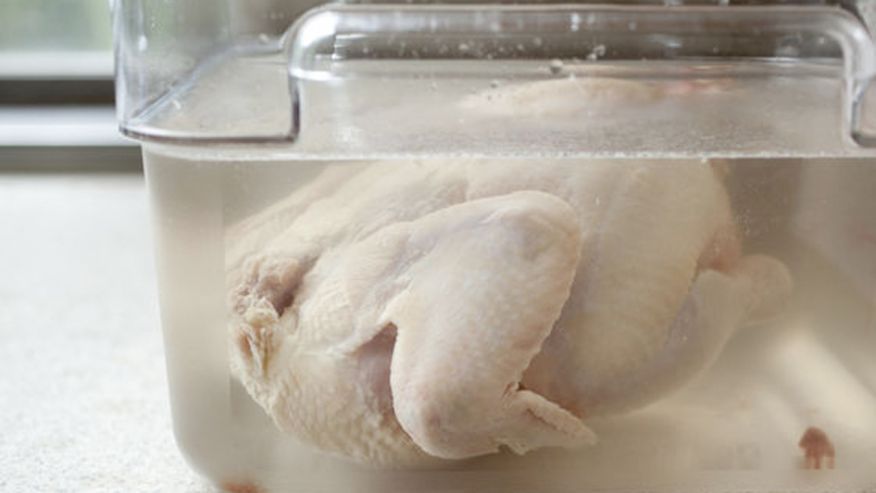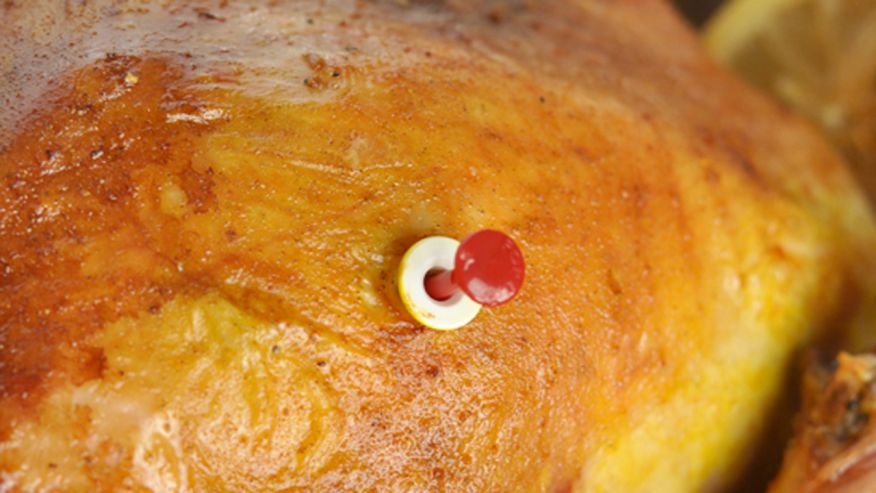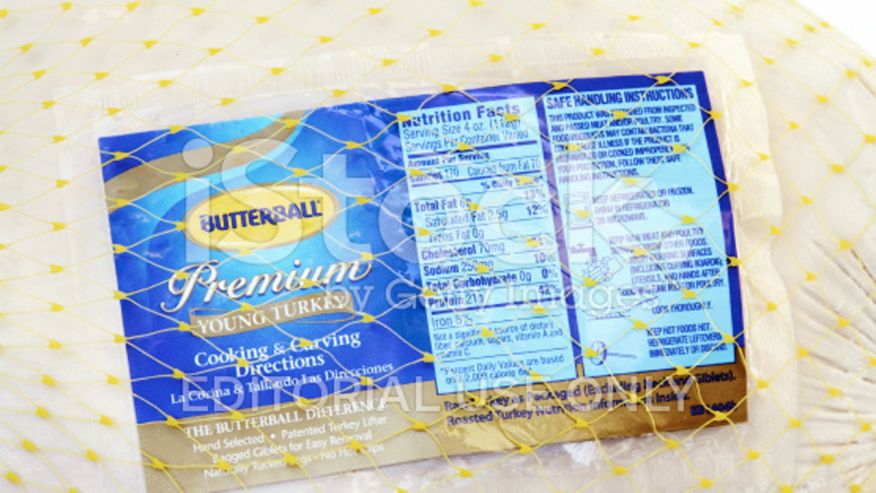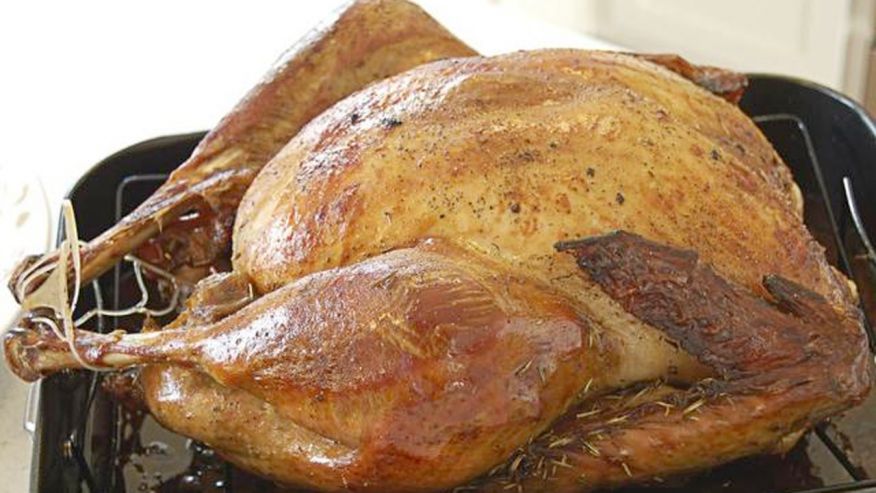6 Biggest Turkey Myths Debunked
It seems everyone has a special "trick" for cooking turkey, but sometimes the best advice is to heed only the right advice. We asked six professional chefs to share their secrets to cooking the perfect bird – and to debunk a bunch of myths about how to do it. Warning ... everything you thought you knew about cooking a Thanksgiving turkey is about to go right out the window – along with your baster.
1. Myth: Cook the whole bird
An entire turkey makes for an impressive table decoration, but most of the meat never gets eaten. Award-winning chef Jamie Bissonnette suggests cooking only the cuts your guests are sure to enjoy. "I prefer roasting the breasts separately, using the backs for gravy and roasting the legs and thighs hotter and longer," he says. This ensures that each cut of meat is cooked evenly and there's no hassle of dealing with leftover turkey parts.
2. Myth: Stuffing is a must
Like Bissonnette, restaurateur chef Ken Oringer suggests buying only the cuts you know your guests will eat. "Get the turkey butchered separately into legs and breast," he says. "All you have to do is roast the breast for about one and a half hours and legs for two hours on a baking tray. No trussing, no stuffing in bird, easy as pie." That part about stuffing is key. According to the recent Thanksgiving issue of Cook's Illustrated, stuffing your bird is more than just a hassle – it's a food safety risk. Stuffing cooked inside the cavity of the turkey does not reach a safe temperature of 165 degrees until well after the bird is overcooked. For the sake of your turkey and yourself, cook and serve the stuffing on the side.
3. Myth: Brine is always better
Whether they're citrus or sugar-based, people love to brag about their brines. But Chad Brauze, head chef at The Back Room at Park Hyatt New York says brining doesn't always make for a tastier turkey. "I have great luck pre-seasoning up to 48 hours beforehand," he says. "The trick is to buy your bird five days ahead, unwrap it and place it on its own shelf in the refrigerator. (Use a cookie sheet with a rack so that it doesn't sit in its juice.) Two days before roasting, sprinkle the entire bird very liberally with a mixture of Herbes de Provence, sea salt and black pepper. On the day of roasting, pull the bird out an hour ahead to take the chill off of it." Then heat up the oven and you're ready to cook your delicious, brine-free bird.
4. Myth: Trust the turkey timer
The first step to cooking the perfect turkey is to toss out the plastic timer stuck in its breast. Chef Dan Holzman, owner of the popular franchise The Meatball Shop, blames the mistake of trusting the timer for many of the season's overcooked birds. "When that thing pops, your turkey is way overcooked," he says. "The best way to gauge if your turkey is done is with a thermometer. Push it deep into the thigh and when it registers 150 degrees, pull the bird and let it rest at least 30 minutes before slicing. It will be perfect!"
5. Myth: Frozen is easier
When it comes to cooking poultry, the flavor is in the freshness. Any bird that has been frozen is going to lack taste. While it's tempting to grab a shrink-wrapped turkey from the supermarket freezer, think about all the flavor you'll forego. Not only does fresh turkey taste better, it doesn't require any kind of elaborate thawing process. "[The myth that] frozen [turkey] is easiest and best is totally wrong," says New York restaurateur chef Jesse Schenker. "Instead, go to your butcher weeks in advance and order a fresh turkey instead of buying a frozen one. The difference in taste is incredible."
6. Myth: Bake at steady heat and baste
Cooking a turkey is lower maintenance than Betty Crocker would have you believe. According to chef Ben Daitz, the drawn-out, slow and steady method makes for a dull bird. He recommends turning up the temperature instead: "Start off slow and crank to high at the end to brown and crisp." Another tip: You don't have to baste. According to the folks at Cook's Illustrated, basting does nothing to moisten dry breast meat. In fact, the liquid runs off the turkey and actually prevents the skin from drying and crisping. So goodbye baster and hello cozy couch. The waiting is really the hardest part anyway.
Related:
- America's 10 Scariest Haunted Houses
- Someone Is Stealing Prime Cuts Of Beef From Live Cows In Canada
- Butter Sushi Is Latest Food Craze
- Meat Producers Blast WHO Report Linking Processed Meat and Cancer
This article was originally published by Adrienne Berard on November 3, 2015
